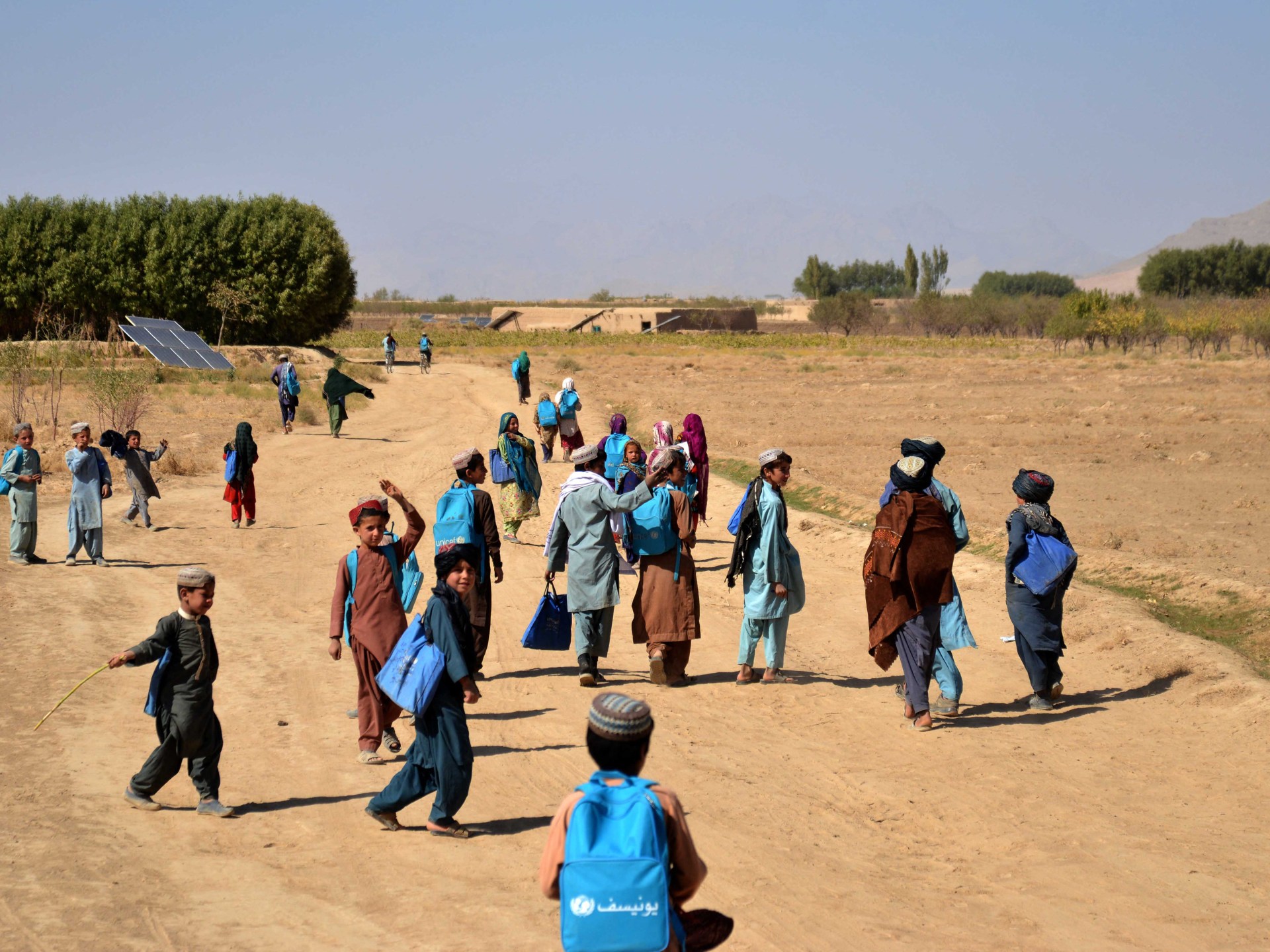Saudi forces killed hundreds of Ethiopians at Yemen border, report says
“If committed as part of a Saudi government policy to murder migrants, these killings would be a crime against humanity,” Human Rights Watch said.
The report accuses Saudi forces — including border guards and specialized units — of killing “hundreds, possibly thousands” of Ethiopians in recent years while subjecting survivors and detainees to torture, rape and other inhumane treatment.
The Saudi Foreign Ministry did not respond to a request for comment. Human Rights Watch said it wrote to multiple Saudi institutions — including the Interior Ministry and Human Rights Commission — but did not receive a response at the time of publication. In statements to news organizations after the publication of the report, the Saudi government has denied the allegations.
The United States considers Saudi Arabia an important strategic partner — and U.S. service members and personnel have trained Saudi security forces, including border guards, as part of a long-standing security assistance mission there.
A State Department spokesman, speaking on the condition of anonymity under ground rules established by the department, called the report’s findings “concerning” and said Washington had raised its concerns with Riyadh over the allegations. “The Administration has not provided/approved arms sales to the land border guards implicated,” the spokesman said, adding that Yemen border guards do not participate in any U.S. government training.
The alleged abuses come as Yemen and Ethiopia are both mired in conflict, protracted crises that have stirred migration from the Horn of Africa and the Arabian Peninsula. In 2020, violent conflict exploded in Ethiopia’s Tigray region between government forces and the Tigray People’s Liberation Front, a paramilitary group whose political wing once ruled the country.
The fighting set off a wider humanitarian disaster, including an exodus, and in 2022, more than 24 million people affected by conflict, drought and hunger in Ethiopia received humanitarian assistance, the United Nations said.
Human Rights Watch now estimates that Ethiopians — fleeing war, hunger and persecution — make up more than 90 percent of migrants traveling to Saudi Arabia along the “Eastern Route.” It’s a perilous path that starts in the Horn of Africa, crosses the Gulf of Aden and snakes through war-torn Yemen to the jagged mountains of Saudi Arabia’s Jizan province.
About 750,000 Ethiopians live in Saudi Arabia, and most of them arrived through “irregular means,” according to the International Organization of Migration. Both Saudi Arabia and Yemen’s Houthi movement, which controls the northern Saada province near the Saudi border, are accused of holding migrants in poor conditions and exposing them to abuse, Human Rights Watch said.
But it was against this backdrop of broader instability that the rights group says it has documented the surge in violence against Ethiopians at the border, where interviewees told harrowing tales of rapacious smugglers, piles of corpses, and devastating mortar and rocket attacks that left migrants dismembered and dying on the trail.
“I saw people killed in a way I have never imagined. I saw 30 killed people on the spot,” the report quoted a 14-year-old girl, Hamdiya, as saying. She crossed the border in a group of 60 in February, Human Rights Watch said.
After the mass killing, she threw herself under a rock and slept. “I could feel people sleeping around me,” she said. “I realized what I thought were people sleeping around me were actually dead bodies.”
In another account, 20-year-old Munira describes scenes of horror and chaos after Saudi border guards released her and 19 others at the border with Yemen — only to fire mortars at them minutes later as they rested.
“They fired on us like rain,” said Munira, who is from Ethiopia’s Oromia region. “I saw a guy calling for help, he lost both his legs. He was screaming; he was saying, ‘Are you leaving me here? Please don’t leave me.’ We couldn’t help him because we were running for our lives.”
Survivors were not sure what specific weapons were used but described being hit by what looked like rocket launchers attached to the back of vehicles.
Human Rights Watch sent photos taken by survivors to outside experts for forensic analysis, who found that a “range of weaponry” appears to have been employed against the migrants. “Some injuries have characteristics consistent with gunshot wounds, while others exhibit clear patterns consistent with the explosion of artifacts with capacity to produce heat and shrapnel,” the group found.
Last year, U.N. experts said they received accusations of Saudi security forces employing “artillery shelling and small fire” against migrants, killing as many as 430 people between Jan. 1 and April 30, 2022.
Nadia Hardman, a refugee and migrant rights researcher at Human Rights Watch, said she was first alerted to the “extraordinary” numbers of killings by a U.N. communiqué in October. Through her networks in Yemen and the Ethiopian diaspora, she got remote access to survivors who resided in Saada, Yemen, and Saana, Yemen’s capital. After interviews, they pass along to her photographs and videos of injuries they or others had sustained.
To corroborate the large number of images, the Human Rights Watch digital investigations team geolocated videos and mapped out Saudi border guard posts through analysis of satellite imagery. “That’s where we were able to find burial sites that had grown in size,” Hardman said. “That’s where we were able to geolocate all of these open source videos on TikTok that people had filmed of masses of Ethiopians trying to cross the border.”
The report’s findings are drawn from similar interviews with 42 Ethiopians, either migrants or asylum seekers who attempted the journey themselves, or friends and relatives of those who tried to cross between March 2022 and June 2023. It also includes analyses of over 350 photos and videos taken between 2021 and July, as well as more than 100 square miles of satellite imagery captured between February 2022 and July 2023.
The material, Human Rights Watch said, helped corroborate the locations of border posts and detention camps, as well as the presence of corpses along the routes and a growing number of makeshift burial sites for migrants on either side of the border.
“Saudi officials are killing hundreds of migrants and asylum seekers in this remote border area out of view of the rest of the world,” Hardman said in a statement. “Saudi border guards knew or should have known they were firing on unarmed civilians.”
The alleged crimes should be “independently and impartially investigated,” Human Rights Watch said, including by the United Nations.
“Saudi Arabia’s documented record of failing to address serious human rights abuses … casts doubt on its willingness to conduct any meaningful investigation, despite the seriousness of the alleged abuses,” the report said.
Missy Ryan in Washington contributed to this report.
Check out our Latest News and Follow us at Facebook
Original Source






